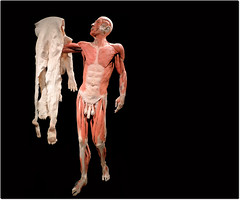 Image via Wikipedia
Image via Wikipedia (Note: Philly.com requires free registration (Or bugmenot). Most of the links illustrate, but are not crucial to, my entry. The grand jury report is very long and very graphic, so note that before reading.)
A few years ago, Philadelphia had its moment in the nationwide scandal involving Catholic priests abusing their young parishioners. Reading the news, I realized how close to home it had hit.
Specifically, my grade school.
I read the first 60 or so pages of the 400+ page grand jury report. I didn't go past that for several reasons: I had mass amounts of work to do, the report was very graphic and very repetitive, there were large passages of legalese.
And I recognized a name.
I went to St. Josaphat School in the Manayunk neighborhood of Philadelphia from the fall of 1992 until the spring of 1997. Father Leonard Furmanski (the second priest listed here) was the pastor of this parish from 1995 to 1998. Even though no charges came out related to my school, the report made it clear that we cannot assume these charges are all-inclusive. Most victims of molestation never report it.
When I saw this name, my first response was not to finish reading, and not to blog, but to call my best friend, who was a classmate of mine at St. Josaphat and who, with his younger brother, served as an altar boy for several years. Neither was abused (thank the deity of your choice), and neither recalls any behavior that even bordered on suspicious. I almost felt guilty bringing this up; my friend considers his altar-boy duties to be among his few pleasant memories of middle school.
So much for full disclosure. It seems to be impossible to find a Philadelphian with any ties at all to Catholicism (I'm not Catholic; I just attended the schools) who doesn't know at least one of the 63 priests listed here.
It was Tom Ferrick Jr.'s column that showed me the ethical question involved.
How much should the public hear? How much is too much for the reader, or too insensitive to the victim? I applaud Ferrick's method. The grand jury report is not on the front page of the philly.com website. I could only get to it though his column. He duly warns his readers, and even after you click the link he provides, there are many choices: the report itself, a catalog of the offenders and their offenses, a directory of the biographical information on these priests, and so on. The reader can make the choice. The journalists just have to offer it.
A few years ago, Philadelphia had its moment in the nationwide scandal involving Catholic priests abusing their young parishioners. Reading the news, I realized how close to home it had hit.
Specifically, my grade school.
I read the first 60 or so pages of the 400+ page grand jury report. I didn't go past that for several reasons: I had mass amounts of work to do, the report was very graphic and very repetitive, there were large passages of legalese.
And I recognized a name.
I went to St. Josaphat School in the Manayunk neighborhood of Philadelphia from the fall of 1992 until the spring of 1997. Father Leonard Furmanski (the second priest listed here) was the pastor of this parish from 1995 to 1998. Even though no charges came out related to my school, the report made it clear that we cannot assume these charges are all-inclusive. Most victims of molestation never report it.
When I saw this name, my first response was not to finish reading, and not to blog, but to call my best friend, who was a classmate of mine at St. Josaphat and who, with his younger brother, served as an altar boy for several years. Neither was abused (thank the deity of your choice), and neither recalls any behavior that even bordered on suspicious. I almost felt guilty bringing this up; my friend considers his altar-boy duties to be among his few pleasant memories of middle school.
So much for full disclosure. It seems to be impossible to find a Philadelphian with any ties at all to Catholicism (I'm not Catholic; I just attended the schools) who doesn't know at least one of the 63 priests listed here.
It was Tom Ferrick Jr.'s column that showed me the ethical question involved.
The cardinal calls the report "very graphic" and, brother, is he right. Parts of it are strictly X-rated, but you couldn't call it salacious. Sickening is more like it, given that the perps were priests, the victims children, and the crime scenes were rectories and churches, even a confessional.Ferrick then goes on to recommend those who can "stomach it" to read the full report. The 60 or so pages I read were brutal. I don't think there is any debate that the public certainly needs to know the identities of these attackers (at least, those that have been convicted) and, now, about the cover-up the Church has gone through to protect them. But do we need to hear that a priest raped an 11-year-old girl, then took her to get an abortion after getting her pregnant? And that is one of the milder stories.
How much should the public hear? How much is too much for the reader, or too insensitive to the victim? I applaud Ferrick's method. The grand jury report is not on the front page of the philly.com website. I could only get to it though his column. He duly warns his readers, and even after you click the link he provides, there are many choices: the report itself, a catalog of the offenders and their offenses, a directory of the biographical information on these priests, and so on. The reader can make the choice. The journalists just have to offer it.








